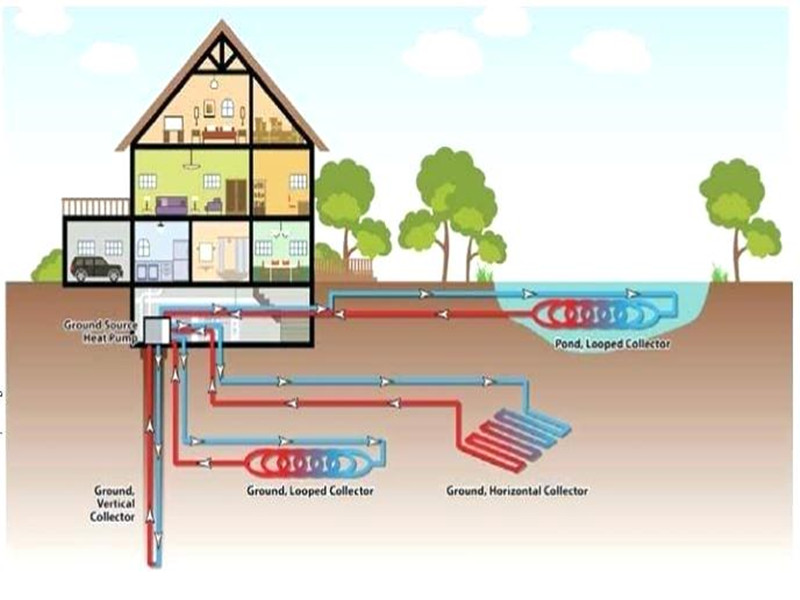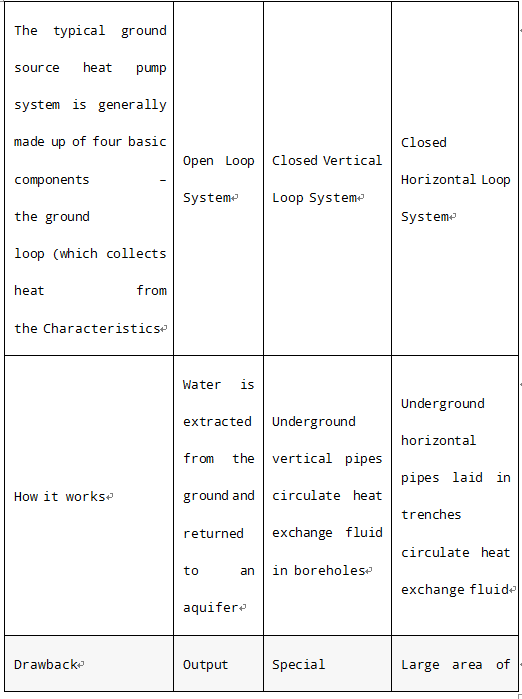
As installing ground source heat pump, you can generate up to four times as much heat as the electrical energy used to power the compressor and circulation pumps within the system. Especially OSB Inverter ground source heat pumps are also available; let us explore more about different way of ground source heat pump installation and their cost difference.
The typical ground source heat pump system is generally made up of four basic components – the ground loop (which collects heat from the ground), the heat pump (which raises the heat to an appropriate temperature and transfers the resulting heat to the home), the heat distribution system, and the hot water heater.
Ground source heat pumps can have either open loop or closed loop systems buried underground. While the open loop system requires access to ponds or some body of water, closed loop systems do not. The following breakdown should help with understanding the differences.
Overview of Open Loop and Closed Loop Systems


Horizontal and vertical systems: what's the difference? The ground loop (the network of pipes pumping the water underground) can be fitted horizontally or vertically. The type of system you choose depends on the space you have available. Horizontal systems are laid in a shallow trench over a wider surface area. The Ground Source Heat Pump Association estimates that a new-build three-bedroom house (around 120m²) would need two trenches which are 30 to 40 meters long.
On the other hand, a vertical system buries the pipes in a borehole. Depending on the size of the system, the borehole could be anywhere between 15 and 100 meters deep. Whatever type of ground source heat pump you install, it's important that the system is correctly sized for your heating needs.
Now ready for buying a inverter ground source heat pump ? Contact us.

